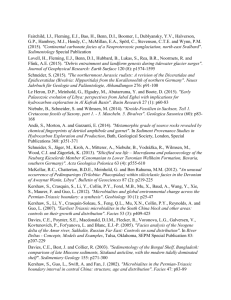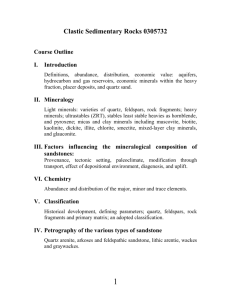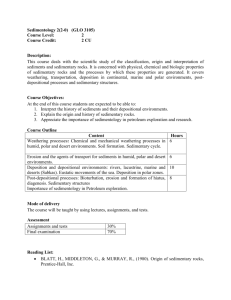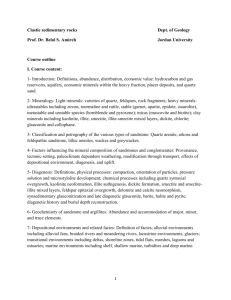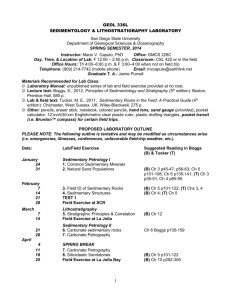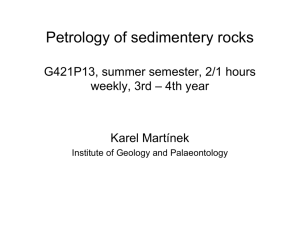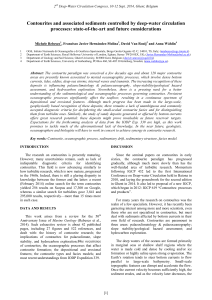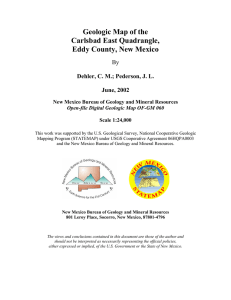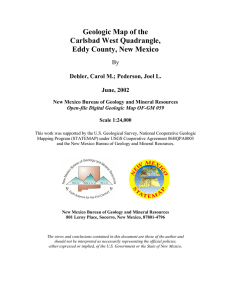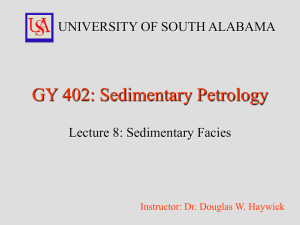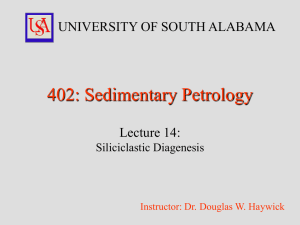GG211_12
advertisement
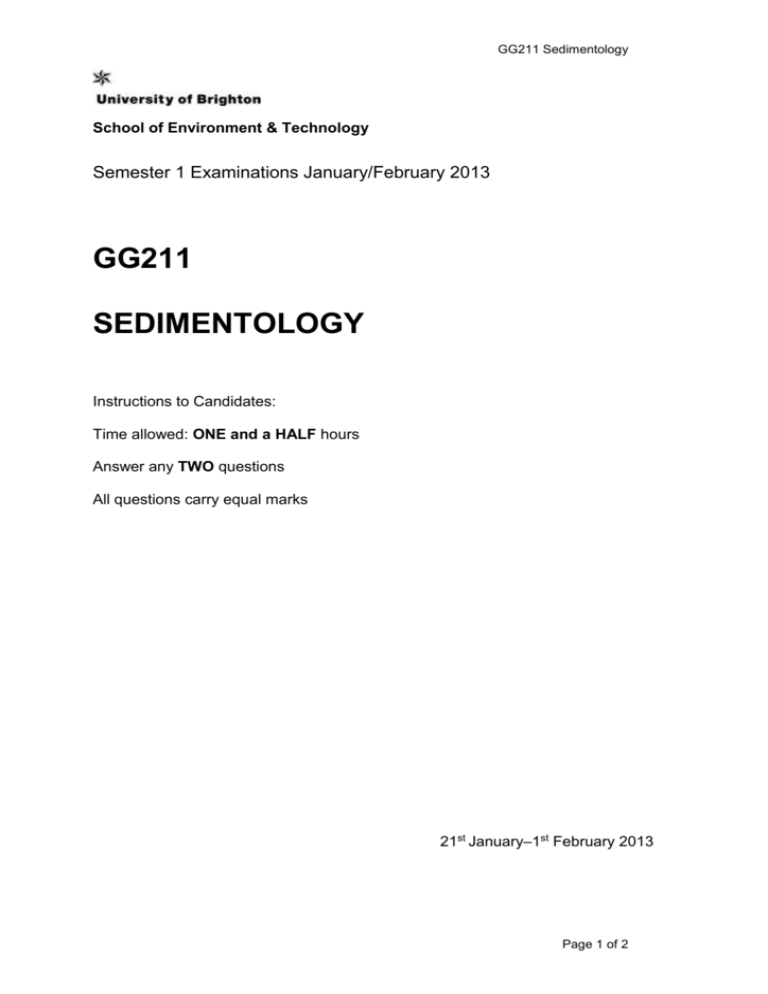
GG211 Sedimentology School of Environment & Technology Semester 1 Examinations January/February 2013 GG211 SEDIMENTOLOGY Instructions to Candidates: Time allowed: ONE and a HALF hours Answer any TWO questions All questions carry equal marks 21st January–1st February 2013 Page 1 of 2 GG211 Sedimentology Question 1 (a) Outline the Folk and Dunham classifications of carbonate rocks, and their advantages and limitations (50%) (b) Thin sections of carbonate rocks may show large rhombic crystals of dolomite, which cut across the primary rock texture. Describe how these dolomite rhombs might have formed? (50%) Question 2 (a) Describe the typical sequences of minerals formed when a body of saline water evaporates. (40%) (b) Discuss, using examples, the major environments where evaporites have formed in the recent and in the geological past. (60%) Question 3 (a) Describe the typical sequence of sediments and sedimentary structures found in an idealised turbidite unit, and discuss how this sequence relates to the changing flow regime within a turbidity current. (60%) (b) Discuss the expected changes in the turbidite sequences produced as you move away from the continental slope, from proximal to distal environments. (40%) Question 4 (a) What is diagenesis? (20%) (b) Describe the typical textural and chemical changes that may occur during diagenesis and lithification of either: i. a micaceous sandstone, or ii. a bioclastic limestone. (80%) Question 5 Discuss how changes in relative sea level result in the formation of the main stratigraphic surfaces used for correlation purposes in sequence stratigraphy. (100%) Question 6 (a) Outline the typical sedimentary facies produced by delta systems. (70%) (b) Discuss why deltaic facies are of potential importance in economic geology. (30%) Page 2 of 2
